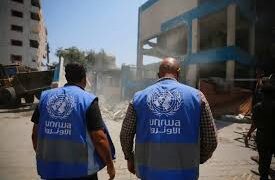Agencies-Gaza post
Earthquake today kills 4, injures tens in the Philippines
A decisive earthquake set off landslides and destroyed buildings in the northern Philippines on Wednesday, killing at least four people and wounding dozens.
In the capital, hospital patients were vacated and frightened people ran outdoors.
The 7-magnitude quake was centered in a mountainous area of the Abra region, said Renato Solidum, the head of the Philippine Institute of Volcanology and Seismology, who illustrated the midmorning shaking as a significant earthquake.
“The ground shook like I was on a swing and the lights suddenly went out. We rushed out of the office, and I heard screams and some of my companions were in tears,” stated Michael Brillantes, a safety officer of the Abra town of Lagangilang, near the epicenter.
Brillantes told The Associated Press by cellphone, “It was the most powerful quake I’ve felt and I thought the ground would open up”.
Over four people were killed mostly in collapsed structures, including a villager hit by falling cement slabs in his house in Abra, where at least 25 others were injured. In Benguet province, a worker was stapled to death after a small building that was under building collapsed in the strawberry-growing mountain town of La Trinidad.
Many homes and buildings had broken walls, including some that collapsed in Abra, where President Ferdinand Marcos Jr., who took office less than a month ago, planned to travel Thursday to meet victims and local officials.
Marcos Jr. told a news meeting he was in his office at the riverside Malacanang presidential palace complex when the chandeliers started swinging and making clanking sounds. “It was very strong,” he said of the ground shaking.
The Red Cross issued a picture of a three-story construction precariously leaning toward a debris-covered road in Abra. A video taken by a panicking witness showed parts of an old stone church tower peeling off and dropping in a cloud of dust on a hilltop.
Patients, some in wheelchairs, and medical personnel were vacated from more than two hospitals in Manila, about 300 kilometers (200 miles) south of Lagangilang, but were later told to back after engineers found only a few minor cracks on walls.
The quake’s strength was reduced from the initial 7.3 magnitudes after further analysis. The quake was set off by movement in a local fault at a depth of 17 kilometers (10 miles), the institute reported, adding it anticipated damage and more aftershocks.
The Philippines lies along the Pacific “Ring of Fire,” an arc of faults near the Pacific Ocean where most of the world’s earthquakes happen. It is also joined by approximately 20 typhoons and low storms each year, making it one of the world’s most disaster-prone nations.
A magnitude 7.7 earthquake killed about 2,000 people in the northern Philippines in 1990.






















